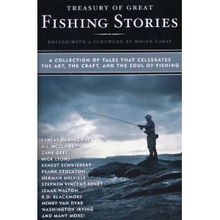Introduction:
Fishing, an ancient pastime, has always been a source of relaxation and enjoyment for anglers around the world. Among the various styles of fishing, wild fishing, or angling in its purest form, offers a unique challenge and a deep connection with nature. One of the key elements to mastering wild fishing is understanding how to effectively tune your fishing equipment, particularly the fishing float or "baiting" technique. In this article, we delve into the essential tips for mastering the art of wild fishing, with a focus on how to properly adjust your fishing float for optimal results.
Understanding the Basics of Trolling and Baiting:
Before we dive into the specifics of tuning your fishing float, it's important to understand the basics of trolling and baiting. Trolling is a method of fishing where the angler uses a moving boat to pull a lure or bait through the water, while baiting involves using natural or artificial bait to attract fish. Both techniques require precise tuning of your fishing float to ensure that you can detect even the slightest bite.

Choosing the Right Fishing Float:
The first step in mastering the art of wild fishing is selecting the right fishing float. There are various types of floats available, each designed for different fishing conditions and species. Here are some key factors to consider when choosing a fishing float:
- Buoyancy: The float should be able to support the weight of your bait and any additional tackle without sinking.
- Visibility: Choose a float that is easy to see in the water, especially in murky or stained waters.
- Sensitivity: Some floats are designed to be more sensitive, allowing you to detect even the smallest movements.
- Size and Shape: The size and shape of the float should be appropriate for the type of fishing you are doing and the species you are targeting.
Adjusting the Fishing Float:
Once you have the right float, it's time to adjust it. Here are the steps to follow:
- Attach the Float: Begin by attaching the fishing line to the float's base. Make sure the connection is secure and that the float is centered on the line.
- Add Weight: Depending on the depth you want to fish and the weight of your bait, add a weight to the line. This can be a split shot or a lead sinker.
- Adjust the Float Position: The position of the float on the line determines how deep your bait will be. Experiment with different positions to find the right depth for the fish you're targeting.
- Fine-Tuning: Once you have the float at the desired depth, make small adjustments to the weight or the position of the float to ensure it is sensitive enough to detect bites.
Tips for Effective Baiting:
In addition to tuning your fishing float, there are several other tips that can help you improve your baiting technique:
- Natural Bait: Use bait that is native to the area and known to attract the species you are targeting.
- Artificial Lures: If you prefer artificial lures, choose ones that mimic the movement and appearance of natural prey.
- Consistency: Keep your baiting technique consistent. Avoid sudden movements or erratic casts, as this can spook fish.
- Patience: Be patient and wait for the fish to take the bait. Sometimes, the best catches come from the most patient anglers.
Conclusion:
Mastering the art of wild fishing, particularly the technique of tuning your fishing float, requires practice, patience, and a deep understanding of the environment and the fish you are targeting. By following these tips and continually refining your skills, you'll be well on your way to becoming a proficient wild fisherman. Remember, the beauty of wild fishing lies in the simplicity and the connection with nature, so take the time to enjoy the experience as much as the catch. Happy fishing!












